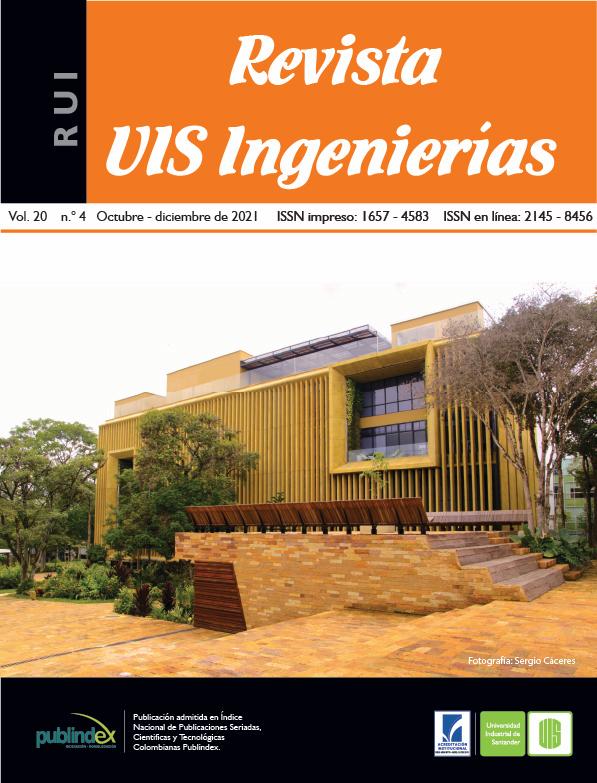Published 2021-07-06
Keywords
- De Quervain's,
- design methodology,
- TGE,
- therapeutic exercises,
- Tendon Gliding Exercise
- physical therapy support ...More
How to Cite
Abstract
De Quervain's tenosynovitis is defined as stenosis of the abductor pollicis longus tendons and extensor pollicis brevis that reduces the strength and dexterity of the hand. It is the result of a work accident or an existing injury. The research objective is to design a therapeutic instrument for a pathology treatment. The design methodology applied is divided into 4 phases: planning and clarification of the task, conceptual design, realization design, and detailed design. As a result, there is self-assisted physical therapy support, which uses the Tendon Gliding Exercise (TGE) program to determine the therapeutic exercises of the instrument. It has interchangeable hand and wrist devices, that allow the patient to perform ideal flexion and extension movements of the fingers.
Downloads
References
[2] S. Gallagher, M. C. Schall Jr, “Musculoskeletal disorders as a fatigue failure process: evidence, implications and research needs,” Ergonomics, vol. 60, no. 2, pp. 255-269, 2017, doi: 10.1080/00140139.2016.1208848.
[3] Organización Mundial de la Salud. Trastornos musculoesqueléticos. [En línea]. Disponible en: https://www.who.int/es/news-room/factsheets/detail/musculoskeletal-conditions.
[4] S. L. James et al., “Global, regional, and national incidence, prevalence, and years lived with disability for 354 diseases and injuries for 195 countries and territories, 1990–2017: a systematic analysis for the Global Burden of Disease Study 2017,” Lancet, vol. 392, no. 10159, pp. 1789–1858, 2018, doi: 10.1016/S0140-6736(18)32279-7.
[5] D. Van Eerd et al., “Effectiveness of workplace interventions in the prevention of upper extremity musculoskeletal disorders and symptoms: an update of the evidence,” Occup. Environ. Med., vol. 73, no. 1, pp. 62-70, 2016, doi: 10.1136/oemed-2015-102992.
[6] M. Van Middelkoop et al., “Effectiveness of interventions of specific complaints of the arm, neck, or shoulder (CANS): musculoskeletal disorders of the hand,” Clin. J. Pain, vol. 25, no. 6, pp. 537-552, 2009, doi: 10.1097/AJP.0b013e31819ff52c.
[7] A. Jurado, I. Medina-Porqueres, Tendón: Valoración Y Tratamiento En Fisioterapia. 2008.
[8] E. Abril Belchí, J. Martínez Cañadas, “Interés del tratamiento osteopático en la enfermedad de De Quervain. A propósito de un caso,” Fisioterapia, vol. 30, no. 6, pp. 299-304, 2008, doi: 10.1016/j.ft.2008.09.016.
[9] X. Gu et al., “Tendoscopic versus open release for de Quervain’s disease: earlier recovery with 7.21-year follow-up,” Journal of Orthopaedic Surgery and Research, vol. 14, no. 1, pp. 357, 2019, doi: 10.1186/s13018-019-1393-5.
[10] X. Miguéns, J. Formigo, Abordaje Médico Del Dolor En Rehabilitación. España: Enfoque Editorial SC, 2017.
[11] M. De la Iglesia, “Ejercicios Excéntricos En Patología Musculoesquelética,” trabajo de fin de grado, Universidad Complutense, 2018.
[12] Á Sánchez-Cabeza, J. L. Arana-Echavarría, “Bases científicas para el diseño de un programa de ejercicios para la mano del paciente con artritis reumatoide,” [En línea]. Disponible en: http://Sermef-Ejercicios.Org.
[13] W. Mosquera, G. Toapanta, “Dispositivo mecatrónico para rehabilitación pasiva de muñeca”, trabajo de fin de grado, Universidad Técnica del Norte, 2017.
[14] G. Pahl, W. Beitz, J. Feldhusen, K.-H. Grote, Engineering Design. London: Springer London, 2007.
[15] K. Ulrich, S. Eppinger, Eds., Diseño Y Desarrollo De Productos. (5ta ed.) México: McGraw-Hill, 2013.
[16] B. Redwood, F. Schffer, B. Garret, The 3D Printing Handbook: Technologies, Design and Applications. 3D Hubs, 2017.
[17] M. A. Wehbé, "Tendon Gliding Exercises," Am. J. Occup. Ther., vol. 41, (3), pp. 164-167, 1987, doi: 10.5014/ajot.41.3.164.
[18] J. Panero, M. Zelnik, Las Dimensiones Humanas En Espacios Interiores. (7ma ed.) México: Ediciones G. Gili, S.A de C.V, 1996.
[19] R. W. Neu, V. Martinez, K. Kern, A. Lowe, Granta Desing Limited, “A unique teaching resource for materials”, 2019. [En línea]. Disponible en: https://www.grantadesign.com/wp-content/uploads/2019/02/CES-EduPack-2019-Product-Overview.pdf .


